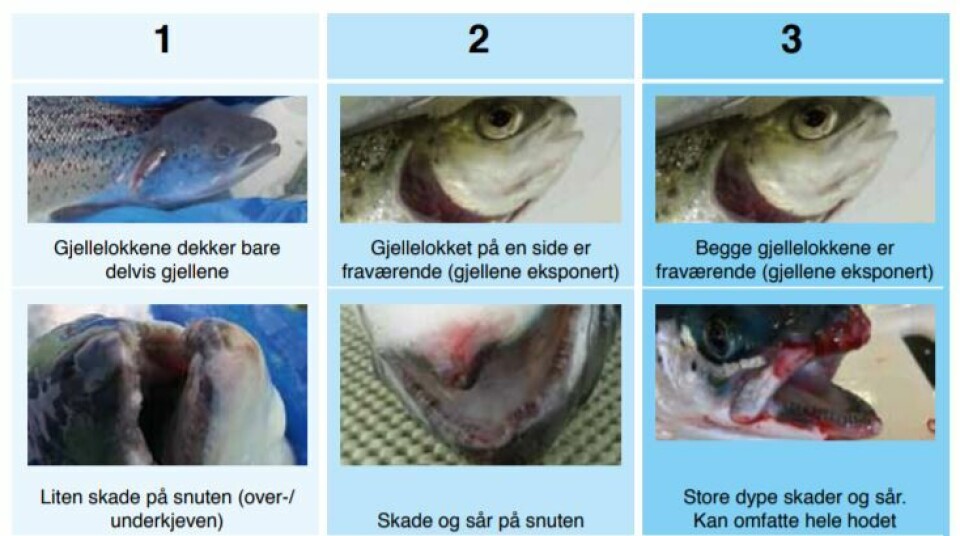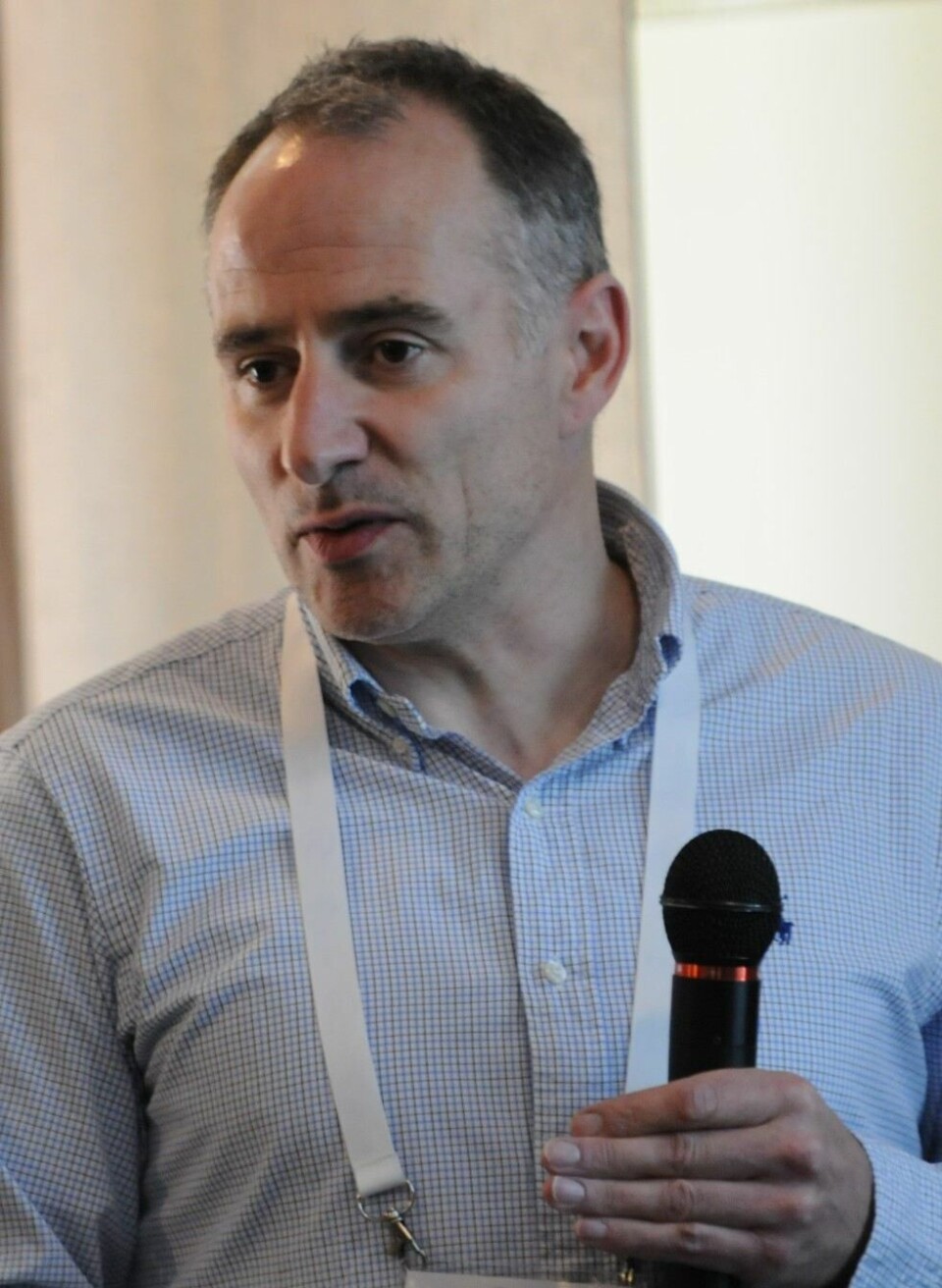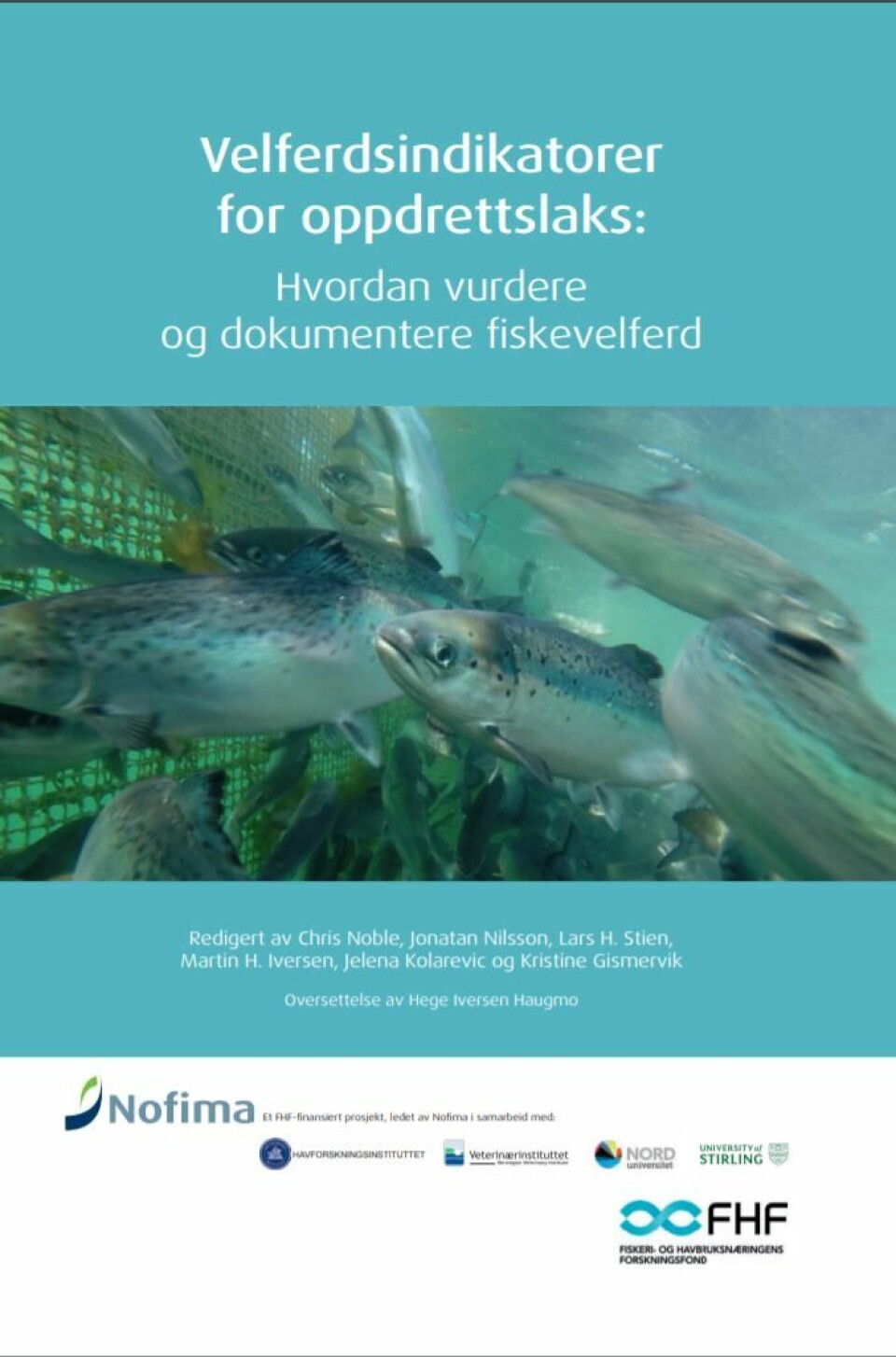
English version of hit Norwegian fish welfare manual ‘coming soon’
A fish welfare assessment manual that has become a big hit with salmon farmers in Norway will soon be available as a free online document in English, its lead editor has said.
Christopher Noble, a senior scientist with Norwegian food research institute Nofima, expects the translated version to be finished within weeks.
The guide, Welfare Indicators for farmed Atlantic salmon: tools for assessing fish welfare, was originally published in Norwegian as a 320-page online document last year. But following requests from Norwegian fish farmers 500 copies were printed in book form. These were quickly snapped up and the Norwegian Seafood Research Fund (FHF) and Nofima are now printing another 500.
NOK 7 million research project
The guide is a result of the FISHWELL research project carried out by Nofima, the Institute of Marine Research (IMR), the Norwegian Veterinary Institute (NVI), Nord University in Bodø and the University of Stirling’s Institute of Aquaculture (IoA). The project received close to NOK 7 million from FHF.

The authors include Jimmy Turnbull, professor of aquatic population health and welfare at the IoA.
“It started out in English, because I’m a native speaker and so is Jimmy, but FHF specifically tasked us to produce it in Norwegian,” said Noble, originally from Carlisle in Cumbria. “The first draft was English, but the subsequent 5-6 months of editing was done to the Norwegian version, and just re-editing that last bit [of the English draft] has taken us a heck of a long time. It’s nearly there, it’s a matter of weeks away.”
Hefty document
“It started out as just a PDF, but it’s quite a hefty document, 320 pages, and people in the industry have been printing it out and trying to take it out on the farm, so the industry requested a hard copy from FHF,” explained Noble.
“FHF are covering the cost of printing and postage for 1,000 copies. We printed 500 and they went in a few weeks. We’ve had some farmers contacting us asking for 20 copies, to put on their barges and boats. We’ve had people contacting us from secondary schools that teach aquaculture, universities and also regulators such as the Norwegian Food Safety Authority.
“I think when the books arrived in Nofima, 300 had already been ordered and the next 200 went in a matter of weeks.
“We hope to get the next batch from the printers in the first week of November. I think we’ve had another 60 or 70 orders from the 500 we have coming.”

“Essentially, it’s a toolbox,” Noble explained about the publication. “It’s saying these are the welfare indicators we have, these are how operational they are, and these are the ones that we are suggesting that you use in specific operations or routines. Not every tool matches every task. It’s split into three parts. Part A is more of an encyclopaedia, giving an update on the current knowledge status regarding fish welfare, and Part B is for different rearing systems. Part C covers advice on how to monitor fish welfare under different husbandry routines or practices, for example during transport or for harvesting.”
Fish farmers in English-speaking countries won’t get the option of a book version, but that’s not a big disadvantage, said Noble, as they can choose to print only the pages relevant to their specific tasks – something they have already been doing after first translating parts of the Norwegian version via an internet application.
“You can just print out the section relevant to your work, maybe just five pages,” said Noble.
Indicators, not a standard
Cermaq, Marine Harvest, Nordlaks, Fishguard and Grieg Seafood have all had an input into the manual, and Cermaq has implemented a new fish welfare policy based on the recommendations in the document.
Noble makes it clear that the manual is not a welfare standard, such as RSPCA Assured, but a toolbox of welfare indicators. “There are more and more welfare indicators coming in all the time, which can be quite confusing, and what we’ve done is say this is the toolbox at the moment, and these are the ones you can use out on the farm.
“We’ve talked a lot with the RSPCA throughout, and we’ve had some great discussions with them. They’ve given us permission to use a lot of their data and text, because they’ve got such great recommendations and experience already.”






















































